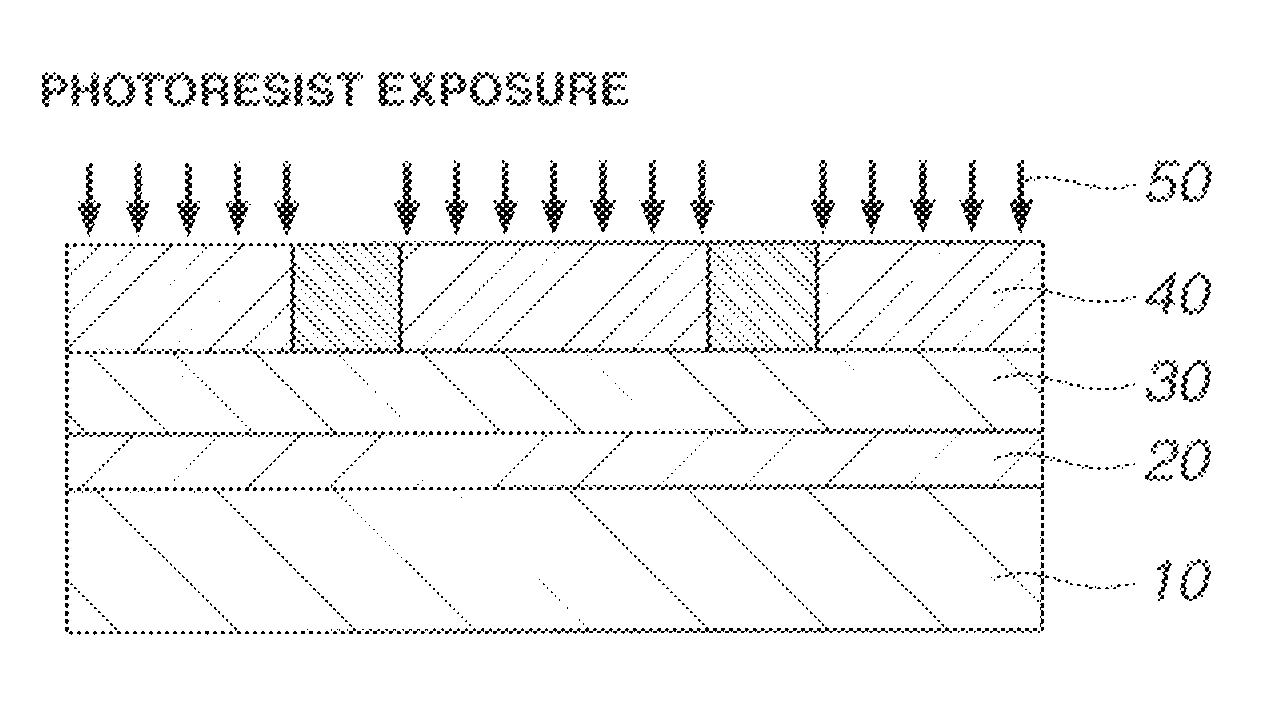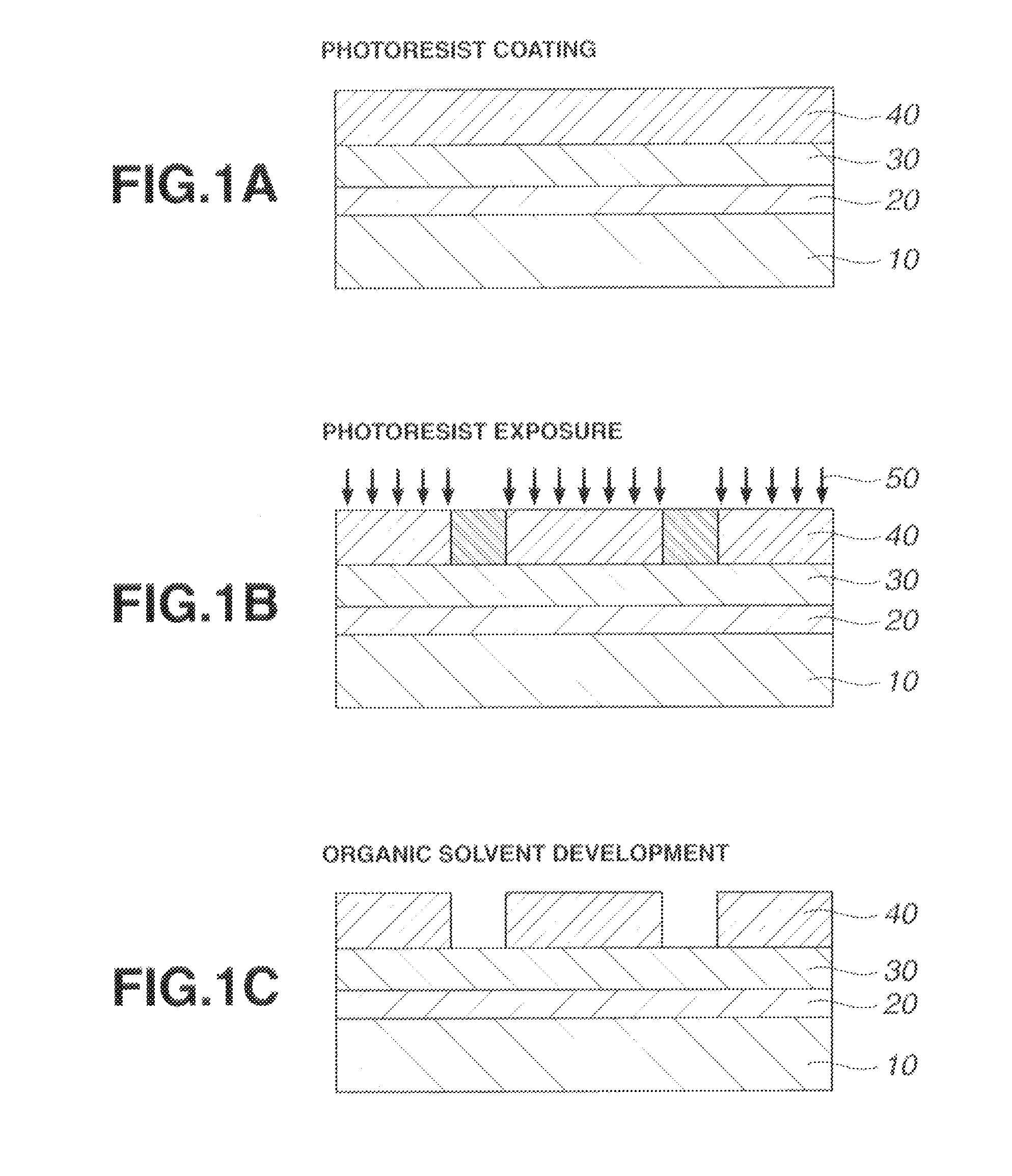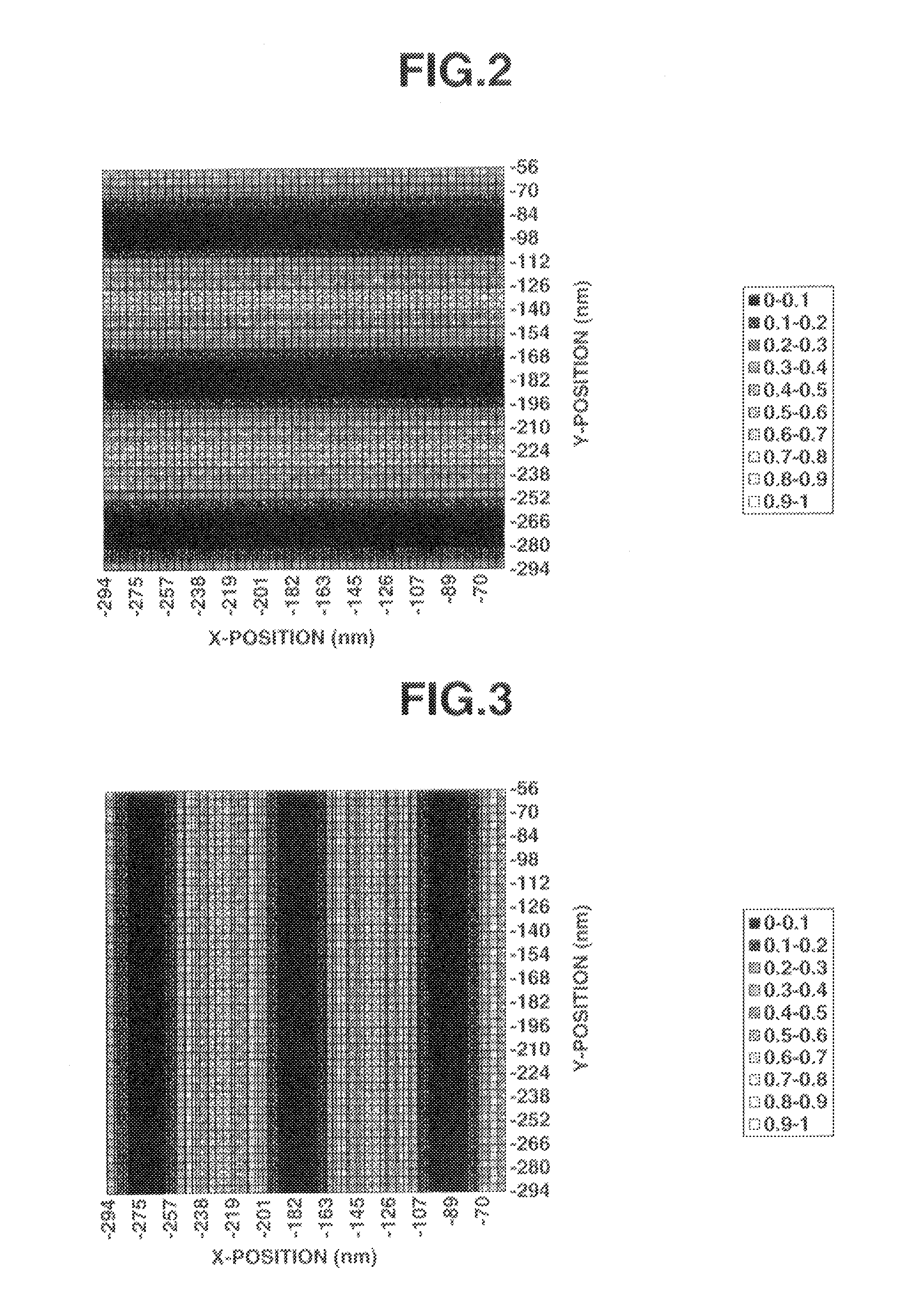Patterning process, resist composition, and acetal compound
- Summary
- Abstract
- Description
- Claims
- Application Information
AI Technical Summary
Benefits of technology
Problems solved by technology
Method used
Image
Examples
synthesis example 1
[0172]Acetal compounds within the scope of the invention were synthesized in accordance with the formulation shown below.
synthesis example 1-1
Synthesis of Monomer 1
[0173]
[0174]In 200 ml of acetonitrile, 50.0 g of Starting Monomer 1 was mixed with 43.8 g of diisopropylethylamine and 0.05 g of 2,2′-methylenebis(6-t-butyl-p-cresol). To the mixture below 20° C., 40.4 g of chloromethyl neopentyl ether was added dropwise, followed by stirring at 40° C. for 8 hours. 300 ml of water was added to quench the reaction, followed by standard workup. Purification by distillation gave 59.9 g (yield 84%) of the end compound.
[0175]Boiling point: 102-104° C. / 10 Pa
[0176]IR (D-ATR): ν=2951, 2916, 2867, 1713, 1637, 1456, 1396, 1362, 1326, 1300, 1171, 1121, 1072, 1042, 1011, 982 cm−1
[0177]1H-NMR (600 MHz in DMSO-d6): δ=0.80 (9H, s), 1.47 (2H, t), 1.65-1.75 (4H, m), 1.80 (3H, s), 1.93-2.05 (4H, m), 2.11 (2H, s), 2.24-2.28 (2H, m), 3.12 (2H, s), 4.74 (2H, s), 5.58 (1H, m), 5.91 (1H, s) ppm
synthesis example 1-2
Synthesis of Monomer 2
[0178]
[0179]Monomer 2 was prepared by the same procedure as Synthesis Example 1-1 except that Starting Monomer 2 was used instead of Starting Monomer 1. Yield 86%.
PUM
| Property | Measurement | Unit |
|---|---|---|
| Size | aaaaa | aaaaa |
| Size | aaaaa | aaaaa |
| Wavelength | aaaaa | aaaaa |
Abstract
Description
Claims
Application Information
 Login to View More
Login to View More - R&D
- Intellectual Property
- Life Sciences
- Materials
- Tech Scout
- Unparalleled Data Quality
- Higher Quality Content
- 60% Fewer Hallucinations
Browse by: Latest US Patents, China's latest patents, Technical Efficacy Thesaurus, Application Domain, Technology Topic, Popular Technical Reports.
© 2025 PatSnap. All rights reserved.Legal|Privacy policy|Modern Slavery Act Transparency Statement|Sitemap|About US| Contact US: help@patsnap.com



